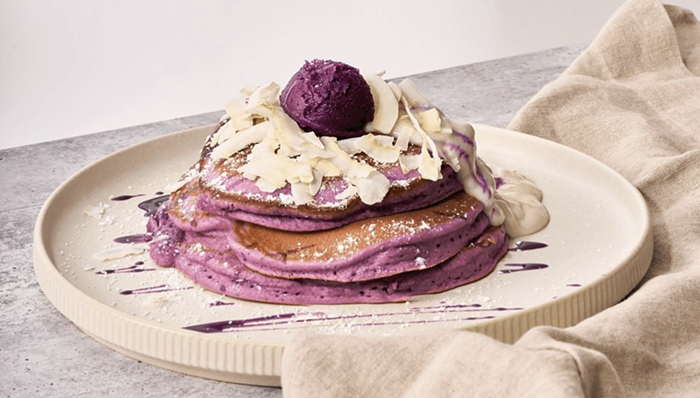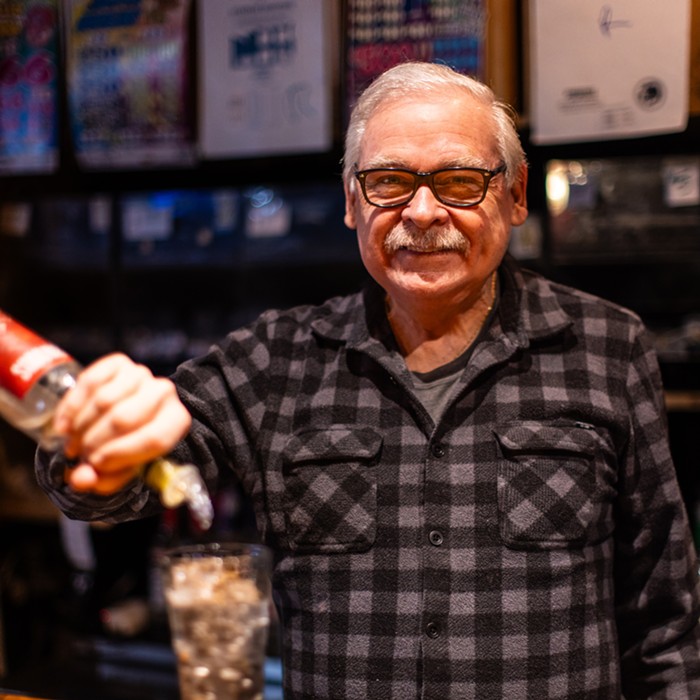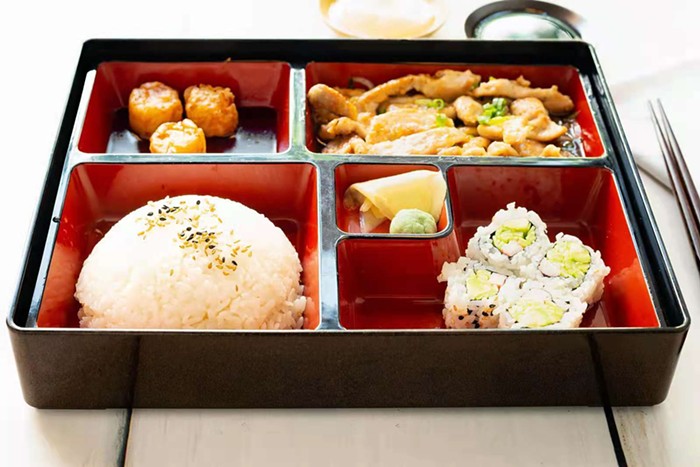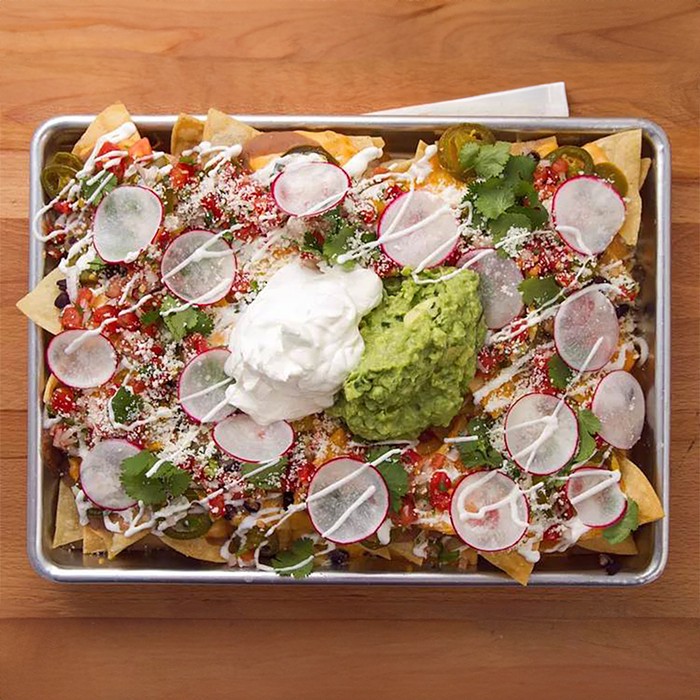In the last year, at least five Asian-inspired higher-end restaurants have opened in Seattle: Stateside (which takes its cues from Vietnam), Tray Kitchen (dim-sum-style Korean), Trove (Korean tabletop barbecue), Zhu Dang (Chinese), and Girin (a Korean steakhouse, set to open any day now). In a city once known for $2.50 banh mi sandwiches and $8 bowls of pho, diners are now willing to pay $20 (or more) for Asian food. Cuisines that were once limited to the edges of the city—the International District, Rainier Valley, and suburbs such as Lynnwood and Federal Way—are now taking root in the rapidly developing neighborhoods of Capitol Hill, Pioneer Square, and Ballard.
It's not a complete surprise—restaurants like Eric and Sophie Banh's Monsoon and Ba Bar, and Rachel Yang and Seif Chirchi's Joule and Revel have been doing steady business for a few years now. But only very recently did Seattle's restaurant boom include Asian cuisine.
And with the surge has come this question, which I've heard in various incarnations: "What's up with all the new Asian fusion places?"
I always thought of Asian fusion as things like Cajun chicken sushi sliders or wasabi mac 'n' cheese. But it seems as if the phrase has become the catchall way to describe any restaurant using Asian ingredients that charges more than $20 per person.
Increasingly, I've come to see it as a term used to describe the food of chefs—mostly of Asian descent—who cook Asian food using any modern or European cooking technique (or any organic and/or locally farmed vegetable) and who do not claim to be cooking their grandmother's recipe.
The term hardly seems an appropriate description for the food coming out of some of Seattle's newest kitchens right now. So why are we calling it Asian fusion?
The term "fusion" was first used by Key West chef Norman Van Aken in a 1988 essay titled "Fusion Cuisine," describing what was, at the time, an American culinary movement to bring flavors from different cultures (not necessarily Asian) together with contemporary technique and presentation. "Like myself, other chefs across the globe are finding that there is a combined power in what (to borrow from the jazz vernacular) I now call 'fusion cooking,'" Van Aken wrote.
Asian fusion began in the 1980s and early 1990s when chefs such as Wolfgang Puck and Jean-Georges Vongerichten introduced dishes that brought together Asian and French flavors and technique: sautéed duck foie gras with pineapple, lobster wrapped in thinly sliced daikon radish with rosemary-ginger vinaigrette sauce.
The idea was so exciting that Asian fusion spread out of haute cuisine and firmly onto the menus of restaurants far and wide. In San Francisco, fusion's glory days found Asian-inspired dishes cropping up everywhere, including a restaurant called Oritalia (Oriental plus Italian, get it?).
Jonathan Kauffman, food writer for the San Francisco Chronicle (and former food critic for the Seattle Weekly from 2006 to 2009), was cooking in Bay Area restaurants at the time. "'Asian fusion' is tied to that specific era and dishes that I remember," says Kauffman. "It was exciting to me back then—the idea that the flavors you used in a dish could come from everything you were eating outside the restaurant, not these strange cultural notions of what was fancy, i.e., French and Italian—but as time went on, it became clear how superficial and simplistic most Asian fusion food was."
Kauffman recalls "ginger Caesar salads, wasabi mashed potatoes, and satay meats with all matter of nonsense." While Kauffman says Asian American chefs were involved in the fusion movement, he adds, "These days, when I look back on Asian fusion, I think of it as white chefs adding Asian accents to Western food."
In Seattle, Asian fusion began with Wild Ginger, which Rick and Ann Yoder opened in 1989 after a trip through Southeast Asia. The Yoders' aim was to introduce (what to them were) new, exciting flavors to wealthy Seattle diners through dishes like satays and curries, and they did so by presenting these flavors in a Western setting to make the experience more approachable to an unfamiliar audience. (The successful restaurant has since added a Bellevue location.) Over at the Dahlia Lounge, which opened in 1990 and is currently celebrating its 25th anniversary, Tom Douglas paid homage to the Asian food he loved by adding Asian elements to Northwest cuisine: hoisin barbecue baby back ribs with fried rice, sake-steamed salmon with butter sauce and turnip cakes.
But until Yang and Chirchi opened the original Joule in Wallingford in 2007, it had been a long time since a chef had rolled out a fine-dining Asian restaurant in Seattle. (Full disclosure: I worked for Yang as a server at Joule for two years. During that time, I was asked the question "Is this food Asian fusion?" approximately twice a week.)
"When we opened the first Joule," Yang says, "there really wasn't a modern or upscale Asian restaurant besides Wild Ginger."
Joule was Yang and Chirchi's first restaurant, and the couple, who are now finalists for this year's James Beard Award for Best Chef Northwest, were just finding their voice as chefs. The menu included items like pork dumplings, veal sweetbreads with tonnato sauce, whole grilled daurade with almond piccata and sweet-and-sour eggplant, as well as house-made kimchi: cucumber and shiitake, apple and fennel.
"People would walk in, look at the menu, and be like, 'But you're Korean. Why isn't this a Korean restaurant?'" remembers Yang.
"People labeled us as 'Asian fusion,'" she continues, putting her fingers up in the air to make air quotes and laughing, "whatever that means. I have never thought of our food that way, but it's what people say."
Whatever diners called it, one thing was clear: They were hungry for what Yang was creating. Joule's success helped pave the way for another restaurant, Revel (where, says Yang, "my real understanding of my identity as a chef came together"), and, more recently, Trove. Trove is, in some ways, Yang and Chirchi's most traditional restaurant—diners may grill their own meats on tabletop barbecues—but the chefs offer nontraditional cuts of meat and marinades to modernize and maximize flavors. (And speaking of modernization, Trove is actually four places—a noodle shop, a dessert window, a cocktail bar, and a barbecue joint—in one.) Yang inspired other chefs, Korean and non, to begin introducing the bold, funky, and salty elements of Korean cuisine onto their own menus.
These days, Korean ingredients are nearly ubiquitous around town: the chicken kimchi sandwich at Capitol Hill's tony cafe Juicebox, the catfish sandwich with kimchi and pork ribs with gochujang at Eastlake's Babirusa, the kalbi ribs at Pioneer Square sports bar Quality Athletics. Making kimchi is a staple activity at fermentation classes around the city. The fermented cabbage is even sold in the heart of Pike Place Market, at Britt's Pickles, taking its seat amid the pickle pantheon of dill sours and bread and butters.
To me, some of the best use of Korean and other Asian ingredients happens at Sodo's Gastropod, where, recently, chef Travis Kukull's menu included kimchi scones, baked oysters with ranch miso aioli, and bubble tea pie. A recent version of his ever-changing okonomiyaki, a savory Japanese griddled pancake, featured Neah Bay halibut, Meyer lemon, squid-ink Kewpie mayonnaise, and chrysanthemum greens. (Past incarnations have included asparagus and mochi with hearts of palm salad and wasabi mayonnaise, and roasted brussels sprouts, kimchi, and sea urchin.)
Similar to how I felt when I tasted Yang's food at Joule for the first time, Kukull's creations leave me with a sense of wonder. I go home suspecting that no one else could have come up with his combinations. Even when things are not successful, they're at least never boring.
Do we call what Kukull is doing Asian fusion? Because ingredient- and spirit-wise, it is. No, we just call it creative. It's weird, wonderful food that simply lives in Kukull's mind, and we celebrate it as such.
While Asian fusion may have first described food created by white chefs, that notion has shifted, too. Now it's almost always in reference to chefs of Asian heritage like Yang. The real problem with the term Asian fusion is that it promotes an idea that an Asian chef must actively "fuse" together things that are simply part of a rich life and identity.
Yang grew up in Korea, went to Brown University (where she earned a degree in fine art), attended French culinary school, then cooked in high-end French restaurants before finding her way to cooking the Korean food she grew up eating. These are not discordant elements that need to be fused together. It's not an "East meets West" encounter; it's her life.
"I can do noodles, I can do bowls of rice. It's comforting. By putting ourselves in these tiny, specific boxes [the way we did at Revel], we actually found freedom to do anything we wanted," says Yang. "This is my food. It has a basis of who I really am: Korean. That's who I am. But I'm also all about experimentation, about differing things. That is how we, Seif and I, are. This food is how I stay true to who I am."
Like Yang, Heong Soon Park, who owns Pike Place Market's Bacco and Chan and the recently opened Tray Kitchen in Fremont, is a Korean chef who found his way back to the flavors of his youth. Initially a businessman, Park owned and operated Bacco, serving Italian cafe food that came mainly from national distributors. He says he realized he wanted to do better, and so he enrolled in the culinary program at the Art Institute of Seattle, eventually shifting Bacco's menu toward fresh and local—salmon Benedict, Dungeness crab sandwiches—the kind of food locals (and tourists) adore.
Tray, which opened in late 2014, is in many ways a return to Park's Korean roots, but rounded out with locally sourced ingredients: spicy Korean fried chicken wings, roasted carrots with feta and sunflower seeds, grilled, citrus-glazed spareribs with sautéed kale, black cod in dashi broth. Many of Tray's vegetables are actually grown on the small farm Park leases in Woodinville. His culinary journey feels almost painfully Northwest. He's less a "fusionist" than he is a Seattle locavore who just happens to be Korean.
While less likely to be saddled with the Asian fusion label, Brandon Kirksey, chef at the soaring, 6,000-square-foot, soon-to-be-open Korean steakhouse Girin, still wants to be very clear: "One thing I want to put out and let people know is that we're not doing fusion."
Kirksey has spent his entire career cooking rustic Italian food, first at Ethan Stowell's Tavolata and Rione XIII and most recently at San Francisco's flour + water ("I'm a white guy who cooked Italian food, and people had a lot to say about that, too"). In the last year, he has immersed himself in Korean food and culture in order to write a menu that he says "pays our respects to traditional Korean dishes and flavors, but goes about things in a more technique-driven, modern approach."
"You're not going to see any of my Italian or French influence," he says. "There's been a lot of dabbling in Korean ingredients on menus. But we're like, enough talk—boom—let's do it. I just want to really focus on staying clear of the whole fusion thing."
At this point, chefs draw inspiration from everywhere around the globe. A few really creative ones, which we're lucky to have in this town, are able to blend seemingly disparate flavors into utterly new creations. We're certainly at a point where everything could, in the most general sense of the term, be called fusion.
Food is a reflection of our culture. Judging by what's coming out of kitchens these days, it's clear that our culture is changing, perhaps faster than our vocabulary to describe it. But one thing is clear to me: The term Asian fusion is, at best, hopelessly outdated. ![]()



















